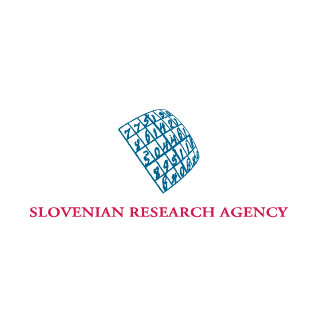Projects
Biotechnological Hub of the NIB (BTH-NIB)
The purpose of the investment project BTH-NIB is the assurance of the appropriate infrastructural conditions for the use of research and developmental opportunities in the fields of operation of the NIB.
Play Video About project Publication
Toxic metals and organometallic compounds in the terrestrial environment
Project coordinator: dr. Radmila Milačič, IJS
Coordinator for NIB: prof. dr. Metka Filipič
Code: J1-4140
Duration: 1.7.2011 - 30.6.2014
Abstract
Presently, various wastes containing inorganic and organic pollutants are disposed of in landfills or accumulated in wastewaters. Toxicity of elements depends on both total concentration and chemical forms in which they appear in environmental compartments. During the disposal and decomposition of different waste materials such as sewage sludge and municipal wastes, several toxic compounds may be released or formed either by microbiological or chemical pathways. Toxic metals and organometallic compounds represent an important group of pollutants in sewage sludge and landfill leachates. Due to the complexity of the sample matrices, organometallic compounds were not frequently investigated in sewage sludge and in landfill leachates. In order to evaluate their environmental, toxicological and sanitary impacts, it is necessary to follow the pathways of organometallic compounds formation, their species transformations and their mobility in different environmental compartments. The disposal of sewage sludge on land or inadequate maintenance of landfills could represent latent environmental threat due to potential leaching of different pollutants to surface and underground waters. To protect the aquatic environment several toxic compounds were introduced to the priority list of pollutants under the Water Framework Directive. Among metals nickel, cadmium, lead and mercury and their chemical compounds as well as tributyltin are considered. Today there are a lot of data available on total metal concentrations in sewage sludge and landfill leachates. However, there is a lack of information on elemental chemical speciation, in particular regarding their toxic organometallic compounds. There is also insufficient information on transformation of metal species by microorganisms or chemicals present in sewage sludge and landfill leachates. Distribution of chemical species of elements between particulate matter and colloids, including nano particles play a key role in mobility of toxic metal species. This information is also necessary in evaluation of the environmental fate of toxic metal compounds. Therefore, in the proposed project a comprehensive investigation will be performed on the occurrence, toxicity and mobility of chromium, nickel, cadmium, lead, mercury and tin in sewage sludge and landfill leachates. Transformation and mobility of selected organometallic compounds (organocadmium, organolead, organomercury and organotin compounds) will also be studied. For this purpose new reliable, selective and sensitive analytical procedures will be developed for chemical speciation of highly toxic organometallic species in complex sample matrices by hyphenated chromatographic and mass spectrometric techniques. There is evidence that organometallic compounds could inhibit respiration rate and nitrification process in activated sludge, while their presence in landfill leachates requires measures for their effective removal before the release of leachates in the surface waters. To follow the species transformation and methylation processes in sewage sludge and landfill leachates enriched stable or radioactive isotopes will be used. New analytical approach by field flow fractionation and size-exclusion chromatography will be applied to characterize the distribution of different metal species between dissolved, colloidal and particulate matter in compartments of samples investigated. Adverse effects of organometallic compounds and their transformation products on the environment will be studied with suitable toxicity testings. Based on the knowledge on the fate of organometallic compounds in sewage sludge and landfill leachates measures can be taken to prevent their potential release to the terrestrial and aquatic environment. Finally, reliable analytical procedures will be recommended for regular monitoring of highly toxic organometallic compounds in complex matrices of sewage sludge and landfill leachates.
Significance for science
The proposed investigation is actual and will considerably contribute to the basic research in the field of chemical speciation and rapidly developing field flow fractionation analysis, a new area of environmental analytical chemistry. The research group follows the world trends of solving the actual environmental problems of waste disposal with its own previous research to top world investigations. In the proposed project advanced analytical approaches combining enriched stable and radioactive isotopes with speciation analysis will applied to follow the processes of chemical species formation and transformation in a variety of sample matrices. Combined with speciation procedures, field flow fractionation approach will enable to follow the mobility and transfer of chemical species of elements in the terrestrial/aquatic environemnt. Based on the comprehensive knowledge, gained within the project tasks, on the fate of organometallic compounds in sewage sludge and landfill leachates, measures will be recommended in order to prevent the potential release of pollutants investigated into the terrestrial and aquatic environment. The expected results will significantly contribute towards a better understanding of cycling of hazardous metals in the terrestrial environment, considering also formation of their more toxic organometallic compounds, which can significantly contribute towards overall toxicity, a fact often overlooked.


 Scope of NIB's accreditation is given in the Annex to the accreditation certificate and in the List of accredited methods for detection of GMOs and microorganisms – plant pathogens
Scope of NIB's accreditation is given in the Annex to the accreditation certificate and in the List of accredited methods for detection of GMOs and microorganisms – plant pathogens Holder of National Standard in the Field of Amount of Substance/Bioanalysis of Nucleic Acids/GMOs and Microorganisms
© 2023- National institute of biology, all rights reserved

